An Excerpt from Iron Cardio
By Brett Jones, StrongFirst Director of Education
“It’s a trap.” —Admiral Ackbar
Intuitive programs can fall into a few traps:
- Always intense
- Always increasing
- Increasing reps per set
- Not doing the math
- Chasing the clock
Always Intense
The “always intense” trap is the sneakier of the five. You think you are rotating intensity but a back off in one variable is offset by an increase in another. You might drop down in weight but add a rep to the sequence. Or you drop a rep from the sequence but add volume or density. These offsetting changes result in a loss of variability by trying to be variable. A very zen programming problem.
Always Increasing
The “always increasing” trap is the more obvious yet insidious of the five. Initially it just feels like good progress. You add a bit of volume or density. If you are time constrained, then you are “beating” your time each session. But it just seems like progress until the constant increases overloads the system. Ignoring the clock and ignoring the results from previous matching sessions are critical to prevent this trap from snaring you.
As you collect your own data, and the session intensity reveals itself over time, you should see progress. Volume can increase, density can increase, load can increase but it is not linear. Review your log and make sure you can spot the variability.
Another bit of perspective on the always increasing trap is that sometimes we fall into it because we fear “taking it easy” on ourselves and being “soft.” Well, if you always give yourself an “out” and a reason not to push through then maybe that could be the case. However, if you never give yourself an “out” and always feel as though you must push through then you are living in the extremes. “Always” and “never” are traps in and to themselves. Instead seek variability and on a day where you feel great push a little and on a day where you need an “out” give yourself one.
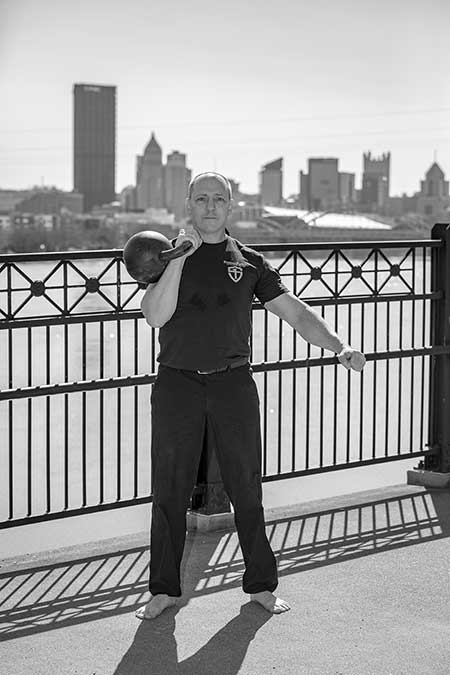
“You fool you fell victim to one of the classic blunders.”
“The most famous of which is never get involved in a land war in Asia. But only slightly less well known is this….”—Vizzini
Ever Increasing Reps
Another trap or blunder within the Iron Cardio (IC) protocol is the ever-increasing number of reps within the sets.
Now I mentioned earlier that I had found there was an upper limit on how many reps could be added to the basic structure. Finding that laddering up to 5 reps led to doing a poor job on both the strength and the aerobics. Why?
The sets just get too long.
In The Quick and the Dead by Pavel and the seminar that preceded that book, Strong EnduranceTM, he lays out the details on power training and the need to keep efforts brief to optimize the anaerobic pathway without getting too far into glycolysis.
Glycolytic work has the most waste product (acid/hydrogen ions) at the least return (lowest number of ATPs produced) but if you want to know more check out the book and seminar already mentioned. But I digress…
In strength training there is research looking at the energy pathways during maximal contraction. This shows that over 2 seconds in a maximal contraction spikes the glycolytic pathway. So, as we add reps and accumulate both more total time in a set and more “seconds” of contraction within the set the more we are headed toward going too far into the glycolytic pathway.
In a 30sec maximal electrically-evoked isometric contraction the rate of CP breakdown reached its peak within 2sec. It declined by ~15% after 2.6sec from the beginning of the contraction and by >50% after 10sec of contraction.
In the final 10sec of the 30sec contraction the rate of ATP resynthesis from CP breakdown was very low, 2% of the initial rate.
Glycolytic energy production reached ~50% of its maximum during the first 1.3sec of the contraction. It reached its maximal rate after 5sec of contraction and was maintained at that level until approximately 20sec into the contraction. It was down to ~50% of its maximum during the last 10sec of the 30sec contraction.1
In other words, keep your sets about 20 seconds or under. This way you get a mild amount of glycolysis and focus on the anaerobic pathway. And to note that the fast and loose drills and passing the talk test are very important parts of this protocol to help restore blood flow and clear waste.
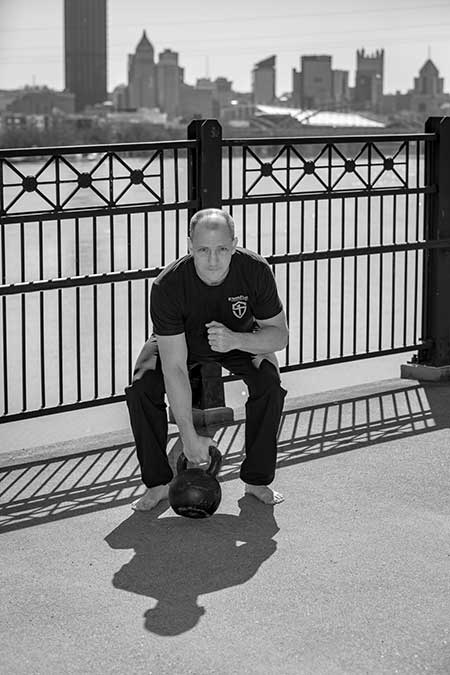
Not Doing the Math
The fourth trap of not doing the math is where the volume can get away from you. This trap became apparent to me after what I thought would be a medium session turned into a heavy/ difficult session.
I had scheduled a session of 32kg {Clean + Press + Squat + Snatch x R&L + 2 Tactical Pullups} x 30, which would normally be a medium session…in my mind.
But in hindsight it was 60 sets of kettlebell work (30 sets each arm) + 60 Pullups.
So, four kettlebell exercises x 60 sets = 240 reps + 60 Pullups = 300 reps.
No wonder it became a heavy/difficult session!
Then I started going back and “doing the math” on my sessions and realized that if I have a 40-set day of three exercises {Clean + Press + Squat} it is still 120 reps. Add an exercise {Clean + Press + Squat + Snatch} and it jumps to a 160-rep session. Push to 60 sets and it is 180 and 240 respectively.
The rep ladder can be particularly impactful in this trap. If a Press rep ladder session is performed for 60 sets where the Press ladders from 1 to 3 then you will have performed 120 Presses + 60 Cleans + 60 Squats. A 240-rep session with a large Pressing volume. Quite the workload.
And then you can also “check the clock.” If the time required to complete the session is also dropping, then you are adding volume on top of density and intensity. Then if you increase load everything goes up a notch as well.
Do the math!
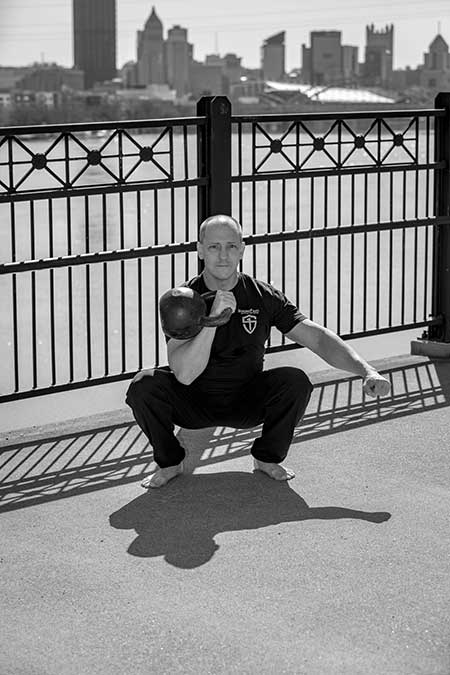
Chasing the Clock
Another trap to beware of is the tendency to chase the clock. Whether using work or time constrained it is difficult to avoid the siren song of chasing the clock and beating a previous time or number of sets.
Don’t.
See simple…but simple is not easy.
Bonus Tip: Record Keeping
An example came up in my training recently. On April 16th I performed a classic (Clean + Press + Squat) weight ladder IC with the 32, 36, and 40kg of 60 sets total in 32:15. And on July 22nd I performed the same session but completed in 35:58. On first blush you might look at that and say that the July session was an “off” day but let’s dig a bit deeper.
The record keeping tip I mentioned is to keep 10 set split times. Or in other words record the time for every ten sets to be completed. This can be very valuable for identifying when you are chasing the clock.
On April 16th my 10 set split times were: 3:15 > 9:10 > 14:35 > 19:54 > 25: 40 > 32:15.
And on July 22nd they were: 5:20 > 11:00 > 17:10 > 23:20 > 29:35 > 35:58. What do you notice?
Look at the first two sets of ten on the respective sessions. 3:15 vs. 5:20 and then the next split of 9:10 vs. 11:00. I went “out of the gate” very aggressively to get my first ten sets done in 3:15 resulting in the next ten sets taking six minutes vs. a 5:20 first ten sets which allowed for a five minute forty seconds next ten sets. Jumping from three minutes to 6 minutes to complete ten sets clearly indicates I was chasing the clock the first ten and I doubled the time needed to complete the next ten. But on the July 22nd session my 5:20 first ten sets allowed me to stay on the just over five minutes “pace.” (This leveled out to a roughly six-minute pace.)
My pacing on the July session resulted in stronger pressing and I woke up the next day feeling like I was ready to train again but after the April session I took two days off training after the session.
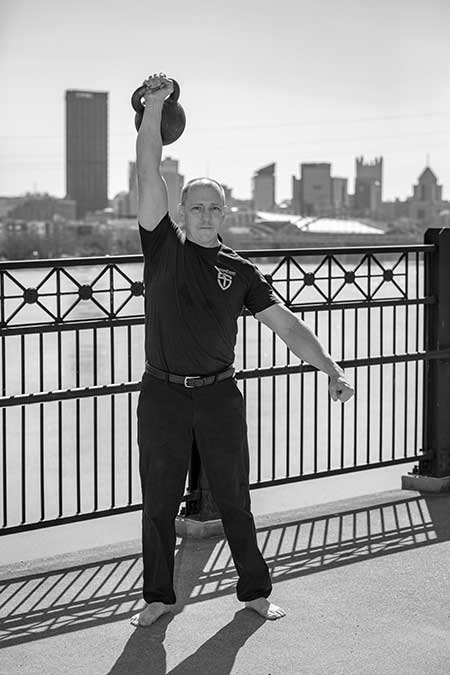
I will take stronger pressing, and better recovery every time but I had to chase the clock a bit to find it.
References
1 Hultman E, Greenhaff PL, Ren JM, Söderlund K. Energy metabolism and fatigue during intense muscle contraction. Biochem Soc Trans. 1991 Apr;19(2):347-53. doi: 10.1042/bst0190347. PMID: 1889614.

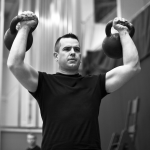
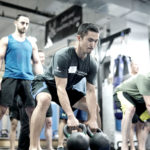

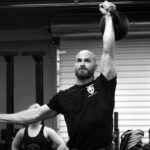




Super great points, which you forget in your everyday training. So, great notes to remember.
I’m a wee bit like you loving the more intuitive programming. I love the term Iron cardio or aerobic fitness. I have been doing something similarly, but didn’t have a good name like yours 🙂
Thank you Coach Djarlo
Hello,
Thanks for a fantastic article, I suspect I will be pondering it for the rest of my training career!
Thank you V
Outstanding (as always) Brett!
Print version…yes please!
All my best,
Cole
Thank you Cole—I’m working on it.
Wow. Some fantastic insight into how you train Brett. All in one article.
The book must be some sort of holy book of fitness!!!!
Thank you Graham
Hi Brett
Where can I purchase your book?
Many thanks.
Rob
Rob,
There are links in the article (Iron Cardio should link to the product).
Rob,
There are links to the product in the article.
Hi Brett
In “The Best All-Around Training Method Ever”, Pavel writes that “to maximize mitochondrial adaptations you need to choose a power exercise like the C&J not a strength one like the military press.”
So, would I be correct in thinking that IC is more strength biased and less longevity biased than the method mentioned above?
Thanks,
Fraser Dawson
Fraser—I would say it is more of a strength based health protocol instead of a conditioning based health protocol.
I would like to buy the book if for nothing more than the Princess Bride quote above. LOL But I have to ask, is this an eBook or a physical book?
Jon,
It is an ebook and I am looking at print on demand options.
Steve,
Can you Push-press or is any overhead motion out?
To avoid the overhead motions you could perform
{Clean + Swing + Clean + Squat} and still use the Traveling 2s and some of the other options.
Any OH pressing is unfortunately out.
Thanks for your advice.
Brett–
I have 3 KBs(no even pair);shoulder injury precludes OH presses.Could I still benefit from your book?Thanks
Steve—please see above